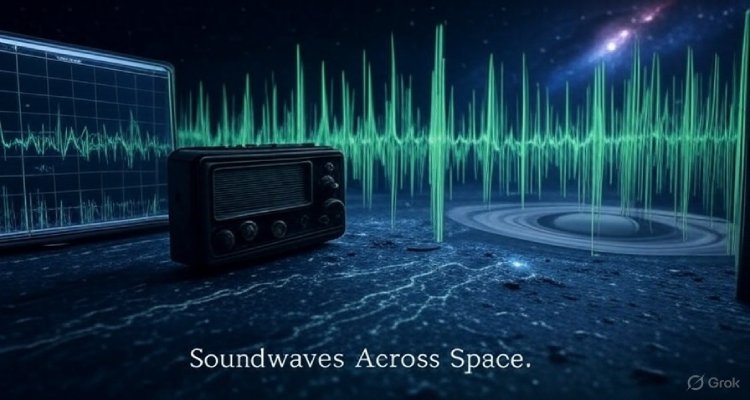Sounds That Shouldn’t Exist: The World’s Creepiest Recordings
Explore the world’s creepiest recordings—from the Bloop to numbers stations—and discover why eerie sounds unsettle us and continue to fuel mystery.
Introduction
There are moments when sound crosses into realms of terror, slipping from the familiar into the uncanny. Over the decades, humanity has captured noises from deep oceans, lonely space transmitters, and deserted rooms that challenge logic. These aren’t simple curiosities—they are sounds that unsettle us, blur the line between science and superstition, and leave us questioning what lurks in silence.
Context & Background
Sound recordings have been humanity’s way of archiving history, from early phonographs to advanced digital systems. But alongside music and conversation, strange and inexplicable sounds have been preserved as well. Some are products of natural phenomena, others of miscommunication in radio systems or scientific experiments, and a few escape explanation altogether.
The eerie power of sound lies in its invisibility—it surrounds us without form, carrying meaning even when words are absent. From submarine hydrophones capturing ocean depths to shortwave radio transmissions picked up in remote fields, unexplained recordings continue to haunt researchers and listeners alike.
Main Developments
Several recordings have earned global attention due to their unearthly qualities:
-
The “Bloop” (1997): Detected by the U.S. National Oceanic and Atmospheric Administration (NOAA), this ultra-low frequency sound from the Pacific Ocean was so loud it was detected across multiple sensors thousands of miles apart. While later linked to ice quakes, early theories ranged from massive undiscovered sea creatures to military experiments.
-
The UVB-76 “Russian Buzzer”: A shortwave radio station broadcasting a monotonous buzzing since the late 1970s. Occasionally punctuated by cryptic voices reading numbers and names, the station’s true purpose remains unclear, fueling conspiracy theories about espionage, coded signals, or even psychological operations.
-
The Taos Hum: Residents of Taos, New Mexico, have for decades reported hearing a persistent low-frequency hum, often described as a distant engine. Scientific investigations have failed to pinpoint a source, with theories ranging from industrial machinery to auditory hallucinations linked to neurological sensitivity.
-
Saturn’s Radio Emissions: NASA’s Cassini spacecraft captured ethereal radio emissions from Saturn in the 2000s. Transformed into audible formats, the sounds resemble an alien choir, unnerving in their spectral tone and reminding us of the vast unknowns beyond Earth.
-
Creepy “Numbers Stations”: Globally, mysterious shortwave “numbers stations” broadcast strings of coded voices, often in chilling monotones. Believed to be used by intelligence agencies to relay assignments to field agents, their ghostly cadence has fascinated journalists, cryptographers, and conspiracy theorists alike.
Expert Insight & Public Reaction
Acoustics researchers and psychologists suggest that these recordings disturb us partly because of their liminality—they rest between explainable and inexplicable. Dr. Helena Ortiz, a psychoacoustics researcher, notes: “Sounds that resist immediate recognition activate our brain’s threat-detection systems. It’s not what we know, but what we cannot place, that frightens us most.”
Public fascination with these eerie recordings is evident in online forums, podcasts, and documentaries. Listeners often describe feeling a primal unease—like tapping into a frequency not meant for human ears. Conspiracy circles interpret many of these sounds as evidence of surveillance, secret communication, or even extraterrestrial life. For some, they represent proof of hidden layers of reality, vibrating just beyond comprehension.
Impact & Implications
The implications of such recordings extend beyond spooky curiosities. Studying unexplained oceanic sounds helps scientists understand seismic activity, iceberg movements, and even climate change signals. Radio anomalies push forward research in signal intelligence and electromagnetic studies. Meanwhile, psychological responses to uncanny audio hint at our evolutionary wiring, rooted in survival instincts.
Yet, these sounds also shape pop culture—finding their way into horror films, dark ambient music, and viral internet lore. They influence how society imagines the unknown, and in doing so, they hold cultural as well as scientific weight.
Conclusion
The world’s creepiest recordings remind us that sound is both familiar and alien. Whether it’s the groan of shifting icebergs, coded whispers over collapsing radio signals, or cosmic rumblings from distant planets, these noises unsettle because they hover at the edge of understanding. They force us to ask: What other frequencies exist just beyond our hearing, waiting to unsettle us next?
Description : Explore the world’s creepiest recordings—from the Bloop to numbers stations—and discover why eerie sounds unsettle us and continue to fuel mystery.











